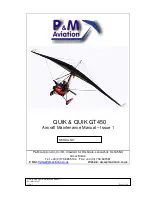
12/8/2006
FLIGHT TRAINING AND STANDARDS MANUAL
ECLIPSE 500
© Eclipse Aviation Corporation, 2006
69
A short field approach/landing is essentially the same as a normal approach/land. At
the normal approach speed, establish a normal descent to the touchdown aiming point.
Simultaneously, reduce thrust to idle and touch down at the desired point and airspeed.
Do not let the aircraft float. Begin maximum braking immediately after the nose wheel is
down. Maximum braking is slightly more aggressive than normal braking, but definitely
avoid locking up a brake, potentially resulting in a blown tire.
Crosswind
While crosswind landing techniques differ, one acceptable method is to approach the
runway while tracking the centerline in a crab. Approaching the threshold, establish a
bank angle into the wind to prevent drifting downwind across the runway while applying
opposite rudder to keep the airplane longitudinal axis aligned with the runway
centerline. Touch down in this cross control configuration and immediately lower the
nose to assist in directional control. Increase aileron into the wind as the airplane
decelerates.
Bounced
If a bounce occurs, this generally means you had too much airspeed and/or too high
descent rate. After a bounce, immediately establish the landing pitch attitude—slightly
nose high. At this point, assess runway remaining and decide whether to attempt to
continue the landing or do a go-around.
Touch and Go
For training or proficiency, a touch and go may be desired. This procedure is designed
to return the aircraft to a normal takeoff configuration as soon as possible after landing
so as to not diminish the runway available. The maneuver should only be done with
sufficient runway available with primary focus on aircraft control. Consideration must
also be made for the touchdown point; a long landing may dictate a full stop instead of
the touch and go.
After accomplishing a normal landing with all three wheels on the ground and throttles in
idle:
1. Retract the flaps to T/O
;
confirm movement
2. Confirm adequate runway available
3. Advance the throttles to max
4. Rotate at Vr
NOTE
During actual aircraft flight training, the instructor will brief whether the landing will be a
touch and go or a full stop. If there is doubt, the pilot should accomplish a full stop
landing.
The minimum runway length used for touch & goes will be 6,000’ (7,000’ if
temperature is above 30° C).












































